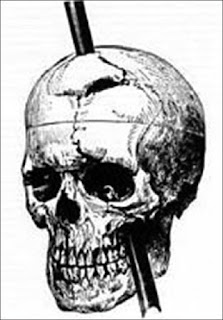Lucy in the Sky With Diamonds
You may have heard that diamonds are a girl`s best friend or are forever, but have you ever heard of these shiny pieces of bling falling from the sky as rain? Diamonds are also well known for being super hard, so much so that they are attached to the tips of drills to cut through the toughest materials. Where, then, would you find liquid diamonds? That`s right, liquid!
One of my favourite pastimes is to read about and listen to podcasts about the planets. Why is this subject so fascinating to me? Apart from the fantastic photographs that spacecraft have sent back from these objects, some of the ways they work are unlike anything we will ever see on Earth. In the solar system, temperatures and pressures never occur naturally on our planet. This means that substances we are familiar with do strange things elsewhere in the solar system. For example, ice far away from the sun`s influence gets so cold that it behaves like rock. Methane, the gas used for cooking and heating, can be a liquid and solid in the outer solar system. The inner planets have some extreme conditions too. Venus has destroyed even our toughest spacecraft with its intense heat, high pressures, and acid rain. Scans from orbit show that the conditions on Venus have led to metallic `snow` on the highest mountains.
These features of the planets and moons in the solar system are what keep me interested. Spectacular rings, ammonia clouds, storms larger than earth and ice geysers are so far out of our everyday experience that I just have to find out more. This often leads me to better understand why substances have the properties we see on Earth.
As part of your GCSE work, you may have learned about the bonding and structure of elements. Bonding is how the atoms in elements join to make molecules. The properties of substances depend on which atoms are bonded together, how they are bonded and the shape and size of the molecule. Don't worry. There are patterns in Chemistry. Learn the patterns, and it will get easier.
Getting back to diamond.
Diamond is made of carbon atoms. This may surprise you if you know that carbon also makes soot, coal and the black bits on my pizza; I may have to stop using the smoke alarm to tell when it's done.
Some elements, like carbon, occur in different forms called allotropes. The way the carbon atoms are joined together determines the final product's properties. The difference between a charcoal briquette and a diamond is how the atoms are joined together. Try giving your significant other a coal ring and explain this to them!
Above is a diagram that shows the structure and bonding of diamond. This is only a tiny part, as a diamond is made of billions of atoms. It is enough to explain diamond’s properties.
Each black dot is a carbon atom; the lines joining them are covalent bonds. The only thing you need to know about covalent bonds here is that they are very strong. Note the diamond in the allotropes of carbon picture is tilted to the right slightly, which is why it looks different to the above image.
Look again at the diagram. Pick a carbon atom in the middle and count how many other carbons it is bonded to. Did you get four? That's right, each atom is bonded to four others with strong covalent bonds, which you would have to break to separate the atoms. This is the clue to diamond's strength. To cut a diamond, you must cut through many thousands of strong covalent bonds. That’s a hard thing to do.
Diamond also has a high melting point. Melting separates the particles in a substance, allowing them some movement. To do this with diamond, you've guessed it, you must break thousands of strong covalent bonds. This takes a lot of heat energy.
Diamond is a poor conductor of electricity. Substances which conduct electricity have free electrons. The four covalent bonds joining each carbon atom in diamond means it has no free electrons, hence the insulating properties.
That's all you need to know about diamond for GCSE. There are some other giant covalent structures in the tests, but I want to get on to diamond rain.
Conditions in the atmosphere of Saturn are pretty extreme. Here on earth, the column of air sitting on top of your head is about 60 miles high and weighs about 100 kg/m2. The atmosphere of Saturn is about nine times thicker, and the pressure at the bottom is one thousand times greater. We haven’t even mentioned the higher temperatures and an atmosphere made of methane. That’s a lot of extremes. This combination of factors means that processes are happening on Saturn which can't occur naturally on Earth.
How does this lead to diamond rain? Firstly, lightning in Saturn's atmosphere turns methane into soot. The soot sinks down through the atmosphere turning into graphite as the pressure increases. Further down in the atmosphere. Lower down, the graphite is squeezed further, forming diamonds. These diamonds are up to 1 cm across and fall like hailstones further into the atmosphere.
How does this diamond rain become liquid? It’s the temperature and pressure again. Scientists have used lasers to heat and squeeze diamonds into a liquid, which is hard and expensive. On Saturn, these conditions happen naturally. The heat and pressure distort the diamond's regular structure, so even though each carbon atom remains bonded to four others, the regular shape gets distorted, making the diamond liquid.
There are many other extraordinary phenomena on Saturn and its moons. We have explored other worlds in the solar system too. Space is vast, and we have only scratched the surface. I wonder what strange and marvellous sights we have yet to uncover.







Comments
Post a Comment